#Kakunodate samurai residence
Text
日本のトリビアまとめ #0027
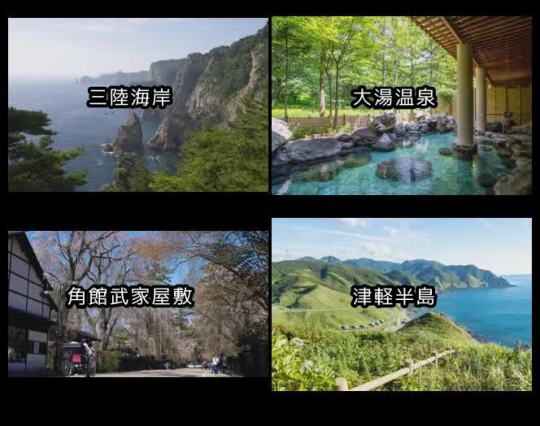
#日本のトリビア#岩手の名所#Akita famous places#大湯温泉#Oyu Onsen#角館武家屋敷#秋田の名所#Tsugaru Peninsula#Aomori famous places#Sanriku coast#Japanese Trivia#Kakunodate samurai residence#津軽半島#Iwate attractions#三陸海岸#青森の名所
0 notes
Photo
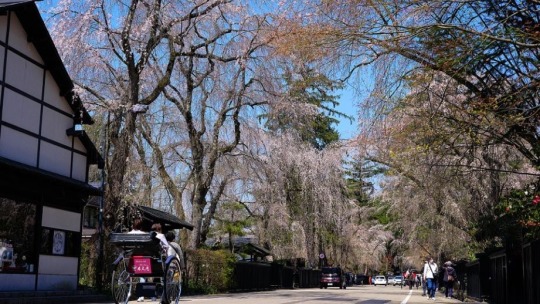
角館武家屋敷
秋田の名所
角館武家屋敷(かくのだてぶけやしき)は、秋田県北部に位置する角館地域にある、歴史的な武家屋敷群です。以下にその特徴と魅力をご紹介します。
1. 歴史的建造物
角館武家屋敷は、江戸時代に栄えた武士や商人の屋敷が連なる歴史的な街並みです。重要文化財に指定されている建造物や保存された武家屋敷が見所です。
2. 保存状態の良さ
多くの建物が保存状態が良く、当時の武家屋敷の趣や雰囲気を感じることができます。
3. 季節の風情
春の桜、秋の紅葉など、季節ごとの風情が楽しめる場所としても知られています。
4. 武家文化の体験
屋敷内には���家屋敷を改装した資料館やレストラン、土産物店などがあり、当時の武家文化や風俗を学ぶことができます。
5. 伝統的なイベント
地域には武家屋敷を活かした様々な伝統的なイベントが行われ、その地域の歴史や文化を垣間見ることができます。
♪♫♬🎤🎹🎶♪♫♬🎤🎹🎶♪♫♬🎤🎹🎶♪♫♬🎤🎹🎶
Kakunodate samurai residence
Akita famous places
Kakunodate Samurai Residences are a group of historic samurai residences located in the Kakunodate area in northern Akita Prefecture. Below we will introduce its features and charms.
1. Historic building
Kakunodate Samurai Residences is a historic street lined with mansions of samurai and merchants that flourished during the Edo period. Highlights include buildings designated as important cultural properties and preserved samurai residences.
2. Good state of preservation
Many of the buildings are well-preserved and you can feel the taste and atmosphere of the samurai residences of the time.
3. Seasonal flavor
It is also known as a place where you can enjoy the scenery of each season, such as cherry blossoms in spring and autumn leaves.
4. Samurai culture experience
Inside the mansion, there is a museum that is a renovated samurai residence, a restaurant, and a souvenir shop, where you can learn about the samurai culture and customs of the time.
5. Traditional events
Various traditional events are held in the area that take advantage of the samurai residences, allowing you to get a glimpse of the history and culture of the area.
0 notes
Text
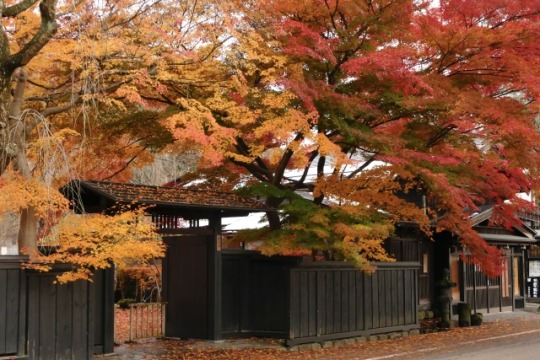
Kakunodate Samurai Residence Street: The beauty of weeping cherry blossoms and blackboard walls A charming samurai residence street│Akita
Introducing road trip spots in Japan!
Learn more about this place👇😊
0 notes
Text
chapter iii—longing, a drabble.
tw // miscarriage mention, vomit mention, blood mention, ptsd
three hundred yen.
it only costs three hundred yen to access the ishiguro family residence in kakunodate, semboku. such a small town of less than twenty-thousand, a trivial size compared to tokyo eight hours south, and yet the magnitude of its memories cannot be heavier. here, she is not a millionaire business owner, nor a successful, independent and fierce woman revolted by the idea of monogamy.
here, she is a failure of a housewife, a shell of a false woman. and as long as this residence stands, her dreams will be haunted, forever twisting into nightmares of what she cannot be.
on trembling legs, she removes her shoes, assumes a pair of house appropriate slippers, and lingers by the entrance. nothing smells the same, filled with curious humans enthused by samurai culture, and yet everything has been perfectly preserved.
it is not her first time here, but the shock remains. several centuries ago, she was forced from this home, forced to trek one hundred and twenty-five miles with bleeding soles and arrows in her chest. stumbling into rivers for just a taste of strength, just enough to keep going.
to return feels like an intrusion, and as she glides across tatami mats, she expects someone to pop around the corner, scold, and banish her. with a racing heart and burning eyes, kagura steps into the guest room. this is where he brought her. in the early morning, with candles burning bright, she still remembers his kind eyes as he washed the dirt off her feet.
drawing breath into aching lungs, fingertips smooth across thin walls, making her way to rows of traditional items on display in the reception room. snow boots, baskets, the clan's flag, upper body armor and—a baby stroller. at first glance, it looks more like an unassuming black box with a handle, but its presence roots kagura to the floor.
every year, she deludes herself into thinking she can see it without suffering a visceral reaction. but no, not this year. cramps erupt in her stomach, and a hand slaps over her mouth, suppressing a grunt. she can still hear her own screams, the blood spilling down her legs as her body rejected another fetus.
she's not strong enough for this. why does she come here year after year just to be tortured?
there's not a mention of her name anywhere on these walls, and yet she bled and served here.
her spirit died here. and nothing, nothing has been the same.
kagura flees for the exit, slips out of the guest shoes and runs outside without her heels. her palm slams into a tree trunk, doubling over, and she dry heaves for a minute. of course, nothing comes up. she hasn't eaten. she hasn't fed.
aided by fresh air, kagura rounds the house's exterior, back to the guest room and collapses on the veranda opening up to the gardens. crumpled on her side, tears stain the hardwood, and she doesn't care to wipe them. once again, there's no one here to clean her feet. no one to worry about her.
no one to take the arrows out of her chest.
#meta ♥︎ of tears and wrath ;#chapter iii. ♥︎ untamed toxicity draped in wealth ;#one verse ♥︎ nothing of mine will be taken again ;#tw // gore#tw // miscarriage mention#tw // blood mention#/ thx i love making myself sad???
0 notes
Link
You’ve heard about Ryokans but have you heard about staying over at a Samurai Residence? You can experience living in one at Kakunodate in Akita Prefecture called, Wanoi Kakunodate. “Wanoi” means “Japanese Way of Life”.
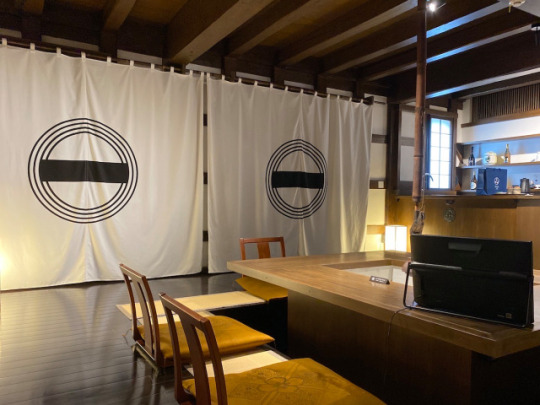
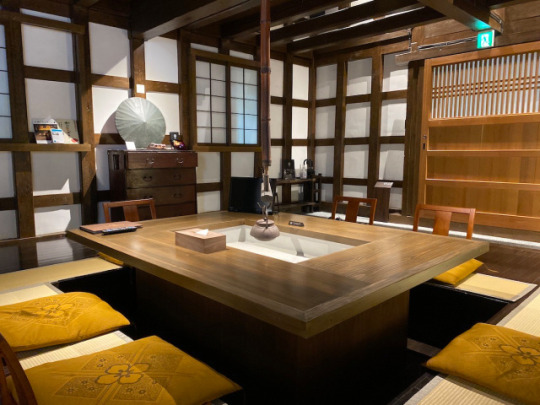

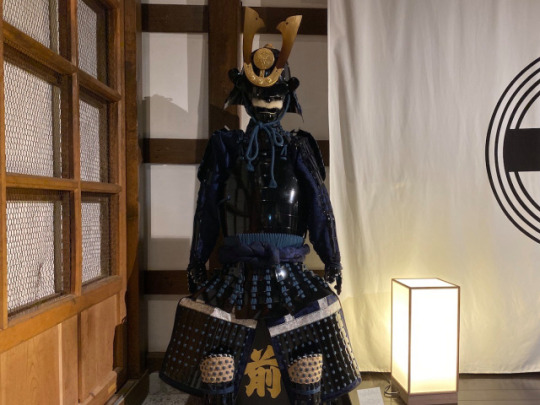
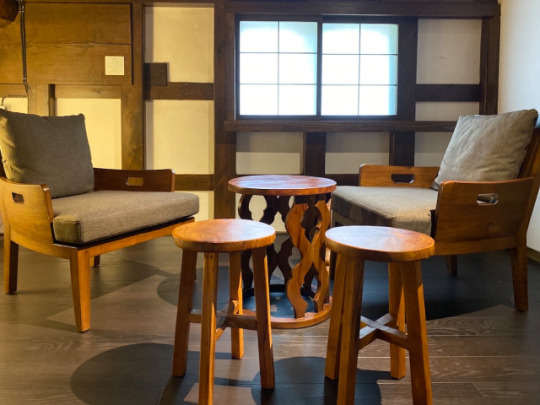
#japan today#little kyoto#samurai residence#Wanoi Kakunodate#kakunodate#akita prefecture#samurai#traditional japan#japan
16 notes
·
View notes
Text

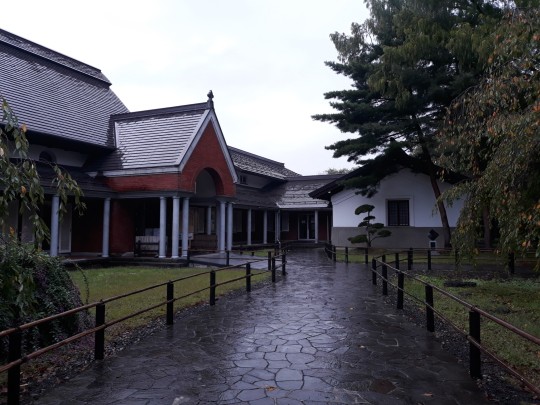
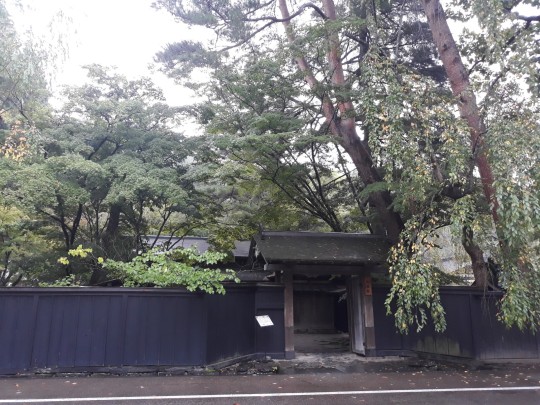
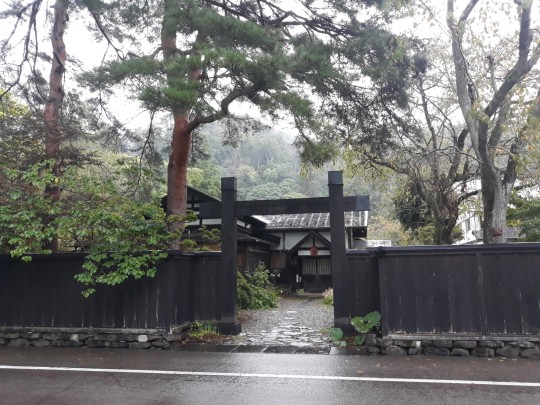


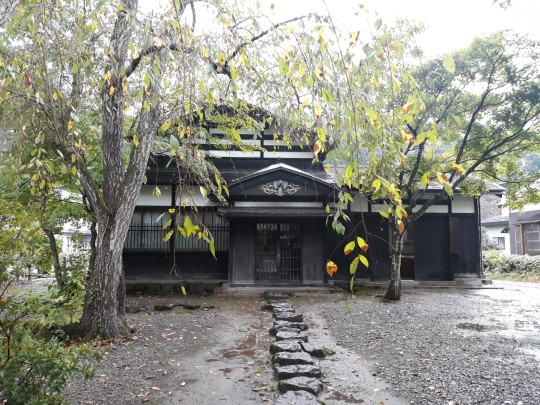

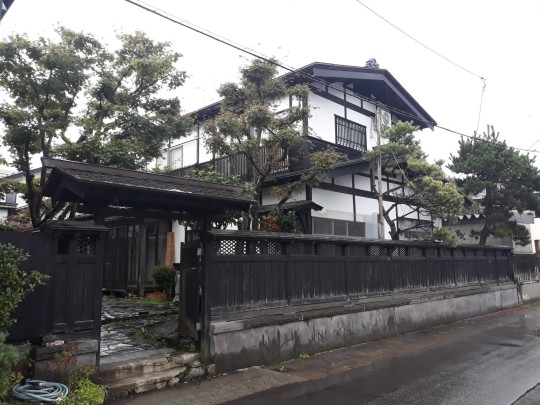

Kakunodate Samurai Residences on a gloomy and rainy afternoon
3 notes
·
View notes
Photo
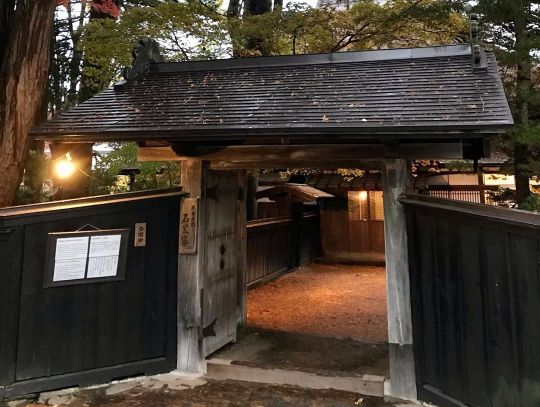
Old Samurai residences in Kakunodate, Akita. & beautiful autumn leaves. #samurairesidence #kakunodate #kakunodatesamuraivillage #discoverjapan #akita #japan #travel #travelalone #cartrip #角館 #角館武家屋敷 #一人旅 #みちのくひとり旅 #車の旅 #紅葉 #秋田 #かなり寒い (角館町武家屋敷通り) https://www.instagram.com/p/CHKeKBABtBC/?igshid=1ex6i4hu55rv8
#samurairesidence#kakunodate#kakunodatesamuraivillage#discoverjapan#akita#japan#travel#travelalone#cartrip#角館#角館武家屋敷#一人旅#みちのくひとり旅#車の旅#紅葉#秋田#かなり寒い
0 notes
Text
Travel Guide to Akita: Japan’s Rural Northern Prefecture
With a rugged coastline, interesting cultural traditions, seasonal festivals, panoramic viewpoints, and the oldest beech forest in the world, there’s no reason why Akita shouldn’t be on your Japan travel itinerary. The top spots of Hiroshima, Osaka, and Kyoto are always listed as must-visit destinations, but what about the untouched region of Tohoku in the northern part of the main island of Japan?
During our recent trip to Tohoku, we travelled around the prefectures of Aomori and Akita and were impressed by the raw beauty, tasty food and lack of foreign crowds in this part of the country. Read on to learn more about travelling to the rural Akita Prefecture, including the top things to see and do, what to expect, how to get around and more.
While we didn’t get to stay in the region too long, we were invited by the Tohoku Tourism Board which meant that we had a private driver and were able to see many different parts of the prefecture that may be missed by the average traveller. Their guidance made it possible to see a lot of the things that Akita and Aomori had to offer in a very short period of time.
Don’t miss our Tohoku travel video, which showcases both the Aomori and Akita prefectures:
youtube
An Introduction to Akita
Prior to our recent trip to Japan, when I heard “Akita”, I always associated it with the breed of dog and didn’t realize it was actually a prefecture in Japan. Yes, this is where the Akita dogs are from, but there’s much more to this rugged area than that.
The Akita prefecture is one of 6 that comprises the lesser-visited Tohoku region, an area at the northern tip of Honshu Island. The capital city of the Akita prefecture is also called Akita…which makes things a little confusing.
We found nearby Aomori to have more outdoor activities available, but Akita felt more traditional and offered numerous festivals and events, plus some very unique cultural experiences.
Known for its steamy onsens, rice paddy scenes, well-preserved Samurai District, interesting folklore and for being the largest consumer of sake in the country, Akita is a very diverse place.
Due to agriculture and fishing being the main industries here, many younger people have migrated to the larger cities in search of jobs in other fields — as with many places in the world. While there are negative results of this exodus for the residents, as a tourist, you’ll find Akita to be a quieter, less-developed prefecture that holds on tightly to its roots.
For travellers, the Oga Peninsula, Shirakami Sanchi UNESCO World Heritage Site, Kakunodate town, and Towada and Tazawa Lakes are of particular interest. Plus, the food specialties here are divine!
A beautiful vantage point in Akita
Things To See and Do in Akita
Whether you’re a culture seeker, outdoor lover, festival goer, or just a person who likes to get away from it all, you’ll find something in Akita. We wish we had more time to explore some other areas of the prefecture (Lake Towaza, for example), but based on our findings from our short trip, we would happily return.
Dine On Traditional Food
What’s so great about travelling in Japan is that each prefecture has its own cuisine. Sure, sushi and ramen are loved everywhere in the country, but make sure you sample the various regional foods on offer in each prefecture.
Here in Akita, you’ll want to try kiritampo and inaniwa noodles.
Kiritampo is a dish of cooked rice that has been mashed and pounded out, before being wrapped around a cedar skewer. The skewers of rice are then toasted over an open fire, and once cooked, the hollow cylinders of rice are added to many dishes.
We had kiritampo in a hot-pot soup when we first arrived in Akita, but some people eat it alone with miso dipping sauce.
Inaniwa noodles are one of the top 3 udon noodles in the country. The process of stretching, kneading, drying and repeating is what makes these noodles so chewy and smooth (and popular!).
You can try inaniwa all around Akita, but especially in Akita City and Yuzawa.
This cold noodle dish was so tasty.
The next fabulous dish we sampled was made with thin, boiled wheat noodles. Having eaten lots of ramen, soba and udon noodles in the past, it was interesting to try cold noodles. They weren’t just cold from the fridge, or run under cold water, but they were actually served with ice cubes on top.
We dipped the noodles in tsuyu sauce with ginger and chives and slurped up every last one.
Check out Kaneyu Restaurant for tasty kiritampo, or if you’re staying at Oga Kanko Hotel (like we did), they offer this at dinner as well. To try inaniwa noodles, click here for some TripAdvisor suggestions, or dine at the restaurants at the Akita train station.
Learn About The Namahage
We visited the Namahage Museum in Oga and the reenactment of the yearly festival was one of the most interesting, yet frightening performances we’ve seen.
On New Year’s Eve in Oga, the Namahage (men dressed in straw outfits and wearing demonic masks) go door to door, stomping around the villager’s homes looking for misbehaved children. They warn the families against laziness and order the children to study hard and obey their parents and grandparents.
Their voices are deep and raspy!
Man making the traditional masks for the Namahage
At the end of the act, the head of the household (a man) calms the Namahage by offering them sake and some food. The Namahage then wish the family good fortune and luck for the coming year.
While children are certainly petrified of the Namahage (who wouldn’t be with these evil-looking characters bursting into your home in the night!), they’re actually considered gods and this tradition is one that is looked forward to by all people of Oga.
It’s also been listed by UNESCO as Intangible Cultural Heritage.
We don’t love museums, but this one was great. To learn more about the Namahage, visit the Oga Shinzan Folklore Museum and watch an informative video, see the outfits that they wear, and then enjoy a reenactment of the ritual. It costs 550 yen ($5) for the museum, 880 yen ($8) for the performance and 1,100 yen ($10) for a combination ticket that includes both. Well worth it in our opinion.
To get to Oga from the Akita Train Station, take the 1-hour train journey on the Ou Line. This is a JR train and is included in your JR Rail Pass. Once at the Oga Station, walk towards the bus station (about 4 minutes away), and look for the Namahage Shuttle bus. It’s about a 25-minute bus ride to the museum. Of course, you could also take a taxi.
A reenactment of the Namahage ritual
Watch Sunset From The Oga Peninsula
While you’re in Oga, don’t miss this amazing coastal sunset spot.
Cape Nyudozaki is the most northern part of the peninsula and is where you’ll find a lighthouse of the same name. This rocky coastline is the best spot to watch sunset in Akita — and actually, it was selected as one of Japan’s top 100 sunset views.
To the southern end of the peninsula, you’ll find the famous “Godzilla Rock” which, when the sun sets behind it, creates a silhouette of Godzilla.
With a can of cold coffee in hand, we stood on the grassy point and watched as the sun dipped towards the Sea of Japan. This is a great way to end the day in Akita. Click here for directions to Cape Nyudozaki.
Sunsets on the Oga Peninsula are the best
Be Entertained by Geisha and Maiko
Here in Akita, the Kawabata Geisha culture used to be very prominent. But, as with many things, over time it sort of died off and typically you can now only see Geisha and Maiko (Geisha in training) in Kyoto. Thankfully, the culture is making a comeback due to the efforts of Ms. Chinatsu Mizuno, the CEO of Sen Inc. (See her TEDx talk in the video below.)
youtube
One of the places you can see this culture is at Kaneyu in the city of Noshiro, which used to be an upper-class Japanese restaurant. These days, while the restaurant isn’t in full operation, the 80-year-old building can be viewed by tourists, and you can rent out a room for a pre-arranged meal, complete with Geisha and Maiko.
Tatami mats line the floor of the narrow hallways and meeting rooms, quality cedar wood was used in the construction of the building, and each room has something different to offer (including secret doors and windows!).
As we entered into one of the main rooms, we were greeted with little tables on the floor, with a tray of traditional food waiting for us. Two Maiko and one Geisha were hired for our lunch and we were able to witness an authentic, elegant performance complete with singing, dancing, and playing of string instruments.
The women poured beer for us and we chatted about life (yes, they spoke some English!).
Watching this traditional geisha and maiko performance was a highlight of our trip
Being able to see Maiko and Geisha up close and to interact with them was incredible. To learn more about these performers in Akita, click here. To get to Noshiro from the Akita Station, it takes around 1 hour and 45 minutes, on the Ou Line and the Gono Line. This is a JR Train and is included in your JR Rail Pass.
Wander Around The Park
Japanese cities always have well-manicured parks, and Akita City is no exception. Visit Senshu Park and wander around the grassy area, explore the Kubota castle and check out the ponds and shrines. This large park is a nice, quiet spot in the city.
Note, there are also Akita dogs here for visitors to see. When we were told this, we assumed the dogs would be on a leash and walked around the massive park, but when we arrived, we saw one sad dog in a kennel. The cage was basically the size of him. As dog-lovers and people who can see a better solution to showcasing these animals, we would recommend that tourists avoid this “attraction” in the park.
Wandering around the beautiful Senshu Park
Witness A Festival
Every August in Noshiro, the Noshiro Tanabata “Tenku-no-Fuyajou” festival takes place. During this time, elaborate lanterns are paraded through the street. But, they aren’t just small floats, these castle-shaped lanterns are around 24 meters tall! Since these are lightweight lanterns, if it’s windy the show will be postponed. We saw a replica of what the lanterns would look like, and it was so intricate. To learn more about this festival, click here.
If you’re visiting Akita in the winter, don’t miss the Yokote Kamakura Snow Huts Festival where little snow huts (similar to igloos) are illuminated and the local children invite people inside to serve them refreshments and treats.
If fireworks are more your thing, you’ll want to time your visit for one of the quarterly Omagari Fireworks Festivals taking place in the city of Omagari. These competitive festivals are some of the best in the entire country. Click here to learn more.
Akita prefecture has numerous festivals throughout the year, so no matter when you visit, there should be an exciting event taking place.
A model of the types of floats at the Lantern Festival
Visit Shirakami Sanchi
Another UNESCO certification for Akita! Sharing part of the nature reserve with the neighbouring prefecture of Aomori, this130,000 hectares (321,000 acres) site is one you don’t want to miss.
This pristine place is great for hiking and visiting lakes while being surrounded by the largest beech forest in the world. There are many trails to explore here, and while the Juniko Lakes are on the Aomori side of the reserve, it’s worth visiting here as well. We spent a few hours hiking around here and enjoying the autumn leave colours. Check out this great English map of the area.
Autumn colours at Juniko Lakes, a gorgeous place
Soak in An Onsen
You can’t come to Japan without soaking in an onsen (Japanese bath). Here in Akita, there are many amazing baths that you don’t want to miss.
The Nyuto Onsenkyo is an area in the mountains that offers exceptional ryokan and onsens. The onsens here vary depending on where you go, but all of them are outdoors, allowing you to be completely surrounded by nature.
Sitting outside while soaking in an onsen is one of the top things to do in all of Japan, and here in Akita there are some of the best onsens in the country. Don’t miss Taenoyu, Ganiba, Magoroku and more. Click here to learn about the various onsens in Akita, and click here to learn about our personal experience in Japanese public bathhouses — including the do’s and don’ts.
Transportation In and Around Akita
Getting to Akita from Tokyo is simple. Take the direct Akita Shinkansen Komachi 1 train from Tokyo Station and arrive at the Akita Station around 4 hours later. This train is included with your JR Rail Pass.
The Shinkansen bullet trains are fast (320 kilometers/hour or 200 miles/hour), spotlessly clean and very efficient — to the minute.
Once you’re in the Akita prefecture, you can get around by bus, train, taxi or rental car. I wouldn’t recommend hiring a car for your entire trip to Japan (due to costs and the fact that the train is so efficient), but renting a car for a day trip is a good idea.
There’s a tourist shuttle bus that will take you around the Oga Peninsula, stopping at all points of interest, including the Oga Hotspring Village, the Namahage Museum, and the Nyudozaki cape. It’s 3,500 yen ($32) for an unlimited ticket, valid for 2 days. If you’d just like to go to one place, prices vary from 1,000 yen ($9) – 2,500 yen ($23). See details on the website here.
Final Thoughts
The Tohoku region of Japan really surprised us with all that it had to offer. This northeastern area of Japan is filled with offtrack adventures, cultural highlights and gentle, welcoming people. After our short exploration of Akita prefecture, one thing became very clear — we need to return to this part of Japan and explore more. Each season has something unique to offer travellers, and even though Akita is mainly known for its cultural experiences, adventurous travellers and foodies will enjoy this part of Japan as well.
A beautiful Maiko (Geisha in training)
(Lead image courtesy of Shutterstock.com, all other images are by Goats On The Road).
We were invited by the Tohoku Tourism Board to explore the region and share our findings with you, our readers. This is an area of Japan we would happily return to and would love to spend more time here. As with all promotional campaigns on Goats On The Road, all thoughts, reviews, and opinions remain our own — despite any complimentary services received.
The post Travel Guide to Akita: Japan’s Rural Northern Prefecture appeared first on Goats On The Road.
Travel Guide to Akita: Japan’s Rural Northern Prefecture published first on https://travelaspire.weebly.com/
0 notes
Link
0 notes
Text
Kakunodate
秋田県仙北郡におかれていた町、小京都とも言われるほど街並みは江戸時代の様子をそのままに残しており、秋に行くと紅葉だけでなく、武家屋敷やレトロ記念館など観光地としての面が強い、また、稲庭うどんや日本酒、秋田の地産の食べ物も豊富で、ダイエット中の方は「食欲の秋」に行くべきではない。 The cityscape keeps the state of the Edo period as it is said to be a small town in Senboku-gun, Akita Prefecture. In the autumn, not only the autumn leaves but also samurai residences and retro memorial halls etc. as sightseeing spots Surface is strong,…
View On WordPress
0 notes
Text
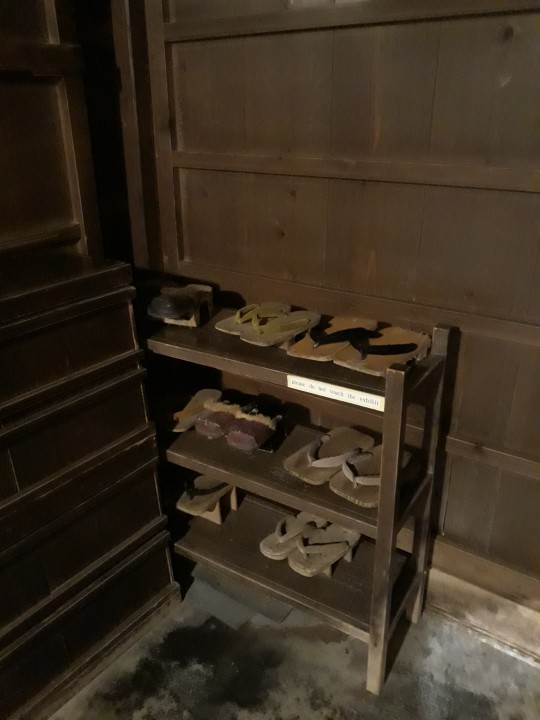
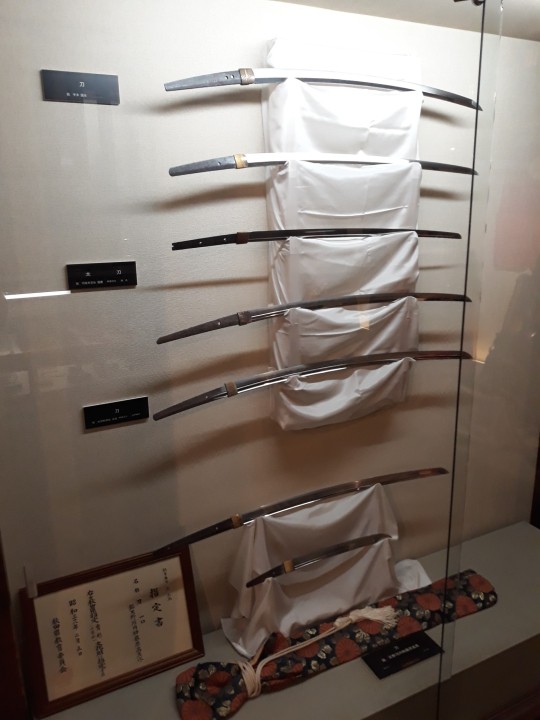
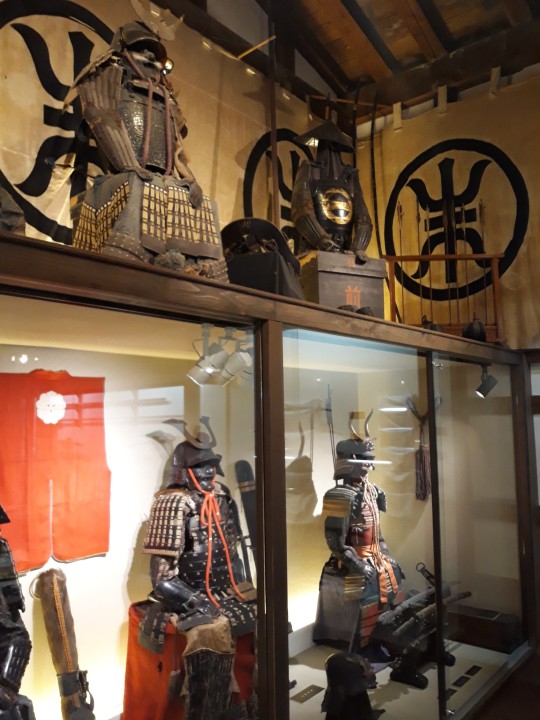
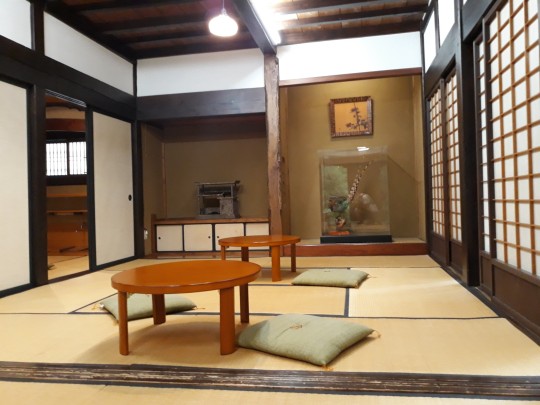

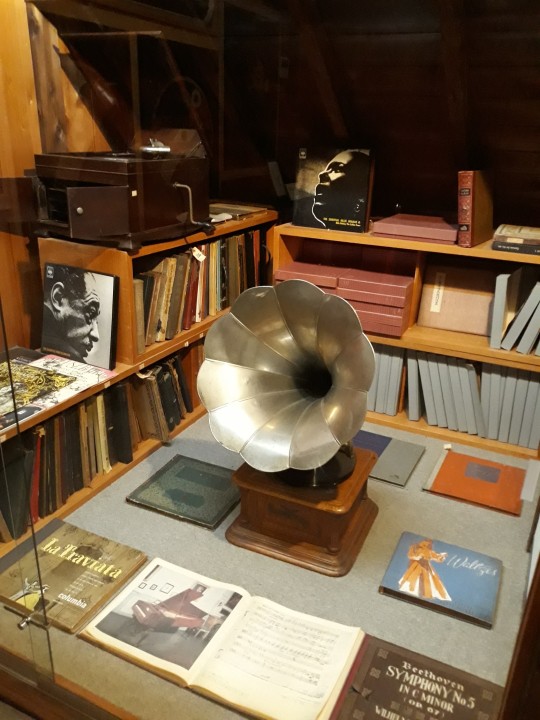
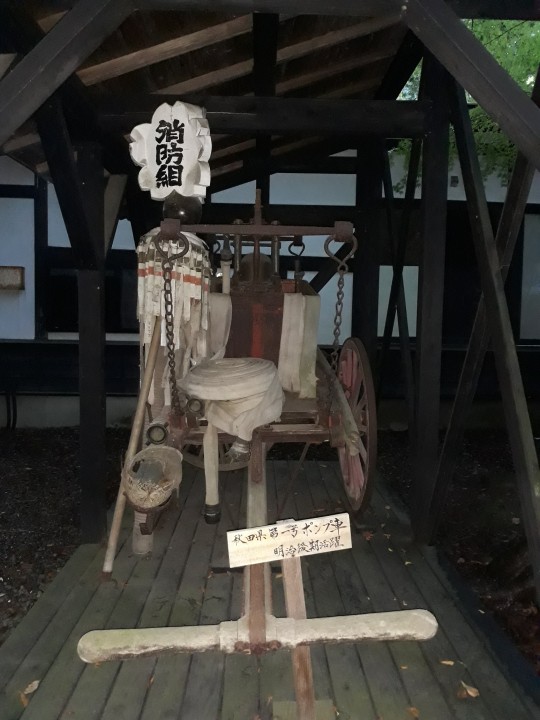
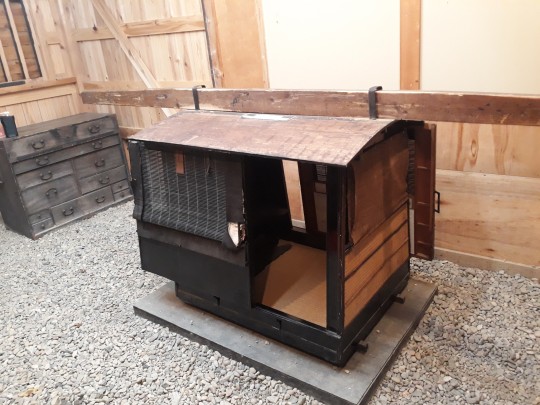
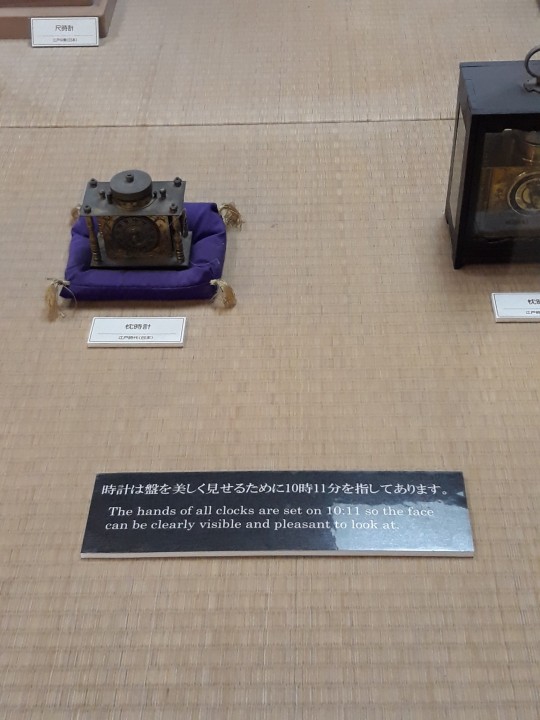
Kakunodate: Aoyagi Residence/Samurai Museum. You can see traditional samurai garments, swords, and houses among other antiques.
2 notes
·
View notes
Text
Tohoku Region: Morioka & Kakunodate
By the time I reached Ichinoseki again I had planned out a new route for the day that was a little more flexible. I would take a bullet train to Morioka and then switch to another bullet train to Kakunodate. Although the distance was much greater, the trains were fast and frequent so I could make up the time by visiting places further away from my base in Sendai. In Morioka I had just enough time to see the city view from the top floor of a tower near the train station, get a pick n mix bag of delicious Lindt chocolates, and walk down to a small park on the river where I had a coffee. I'd wanted to get to the Morioka castle ruins but unfortunately it was just too far to get there and back for the train. Coffee was an acceptable replacement. When I finally arrived in Kakunodate it was raining but not too heavily so I just started walking my regular path that I had planned. I had about 2 hours here which was enough for a walk around the village and back to the train station. As I walked the rain steadily got heavier and I was forced to duck under a bus station roof at one point and then go into Lawson to use the bathroom. I'd thought to buy an umbrella too but once I was finished, the rain had mostly stopped! I managed to walk around most of the samurai residences with just a bit of light drizzle but I found them a little underwhelming. Upon reaching the top end of Kakunodate's town centre the rain started up again quite heavily but I'd reached the Aoyagi residence which was also a samurai museum. I decided to just pay the entrance fee and go inside despite not being too interested, it was more to beat the rain! To my surprise though it was quite an interesting museum and they had large swords in a case that you were able to pick up and hold. They also had an antiques room filled with old gramophones, cameras, and clocks which was quite cool. There was a sign saying that all clock faces display 10:10 because it's the most aesthetic time apparently! I began my walk back to the train station as it was starting to get dark but at least the rain had stopped. When I was about 2 minutes away it started back up and by the time I was under the cover it was crashing down so I had been lucky to make it around the town before this weather hit! The bullet train took me all the way back to Sendai, I'd tossed up about whether to stop again in Morioka for a look around at night but I thought I'd be tired and just want to go to my capsule which was accurate! Unfortunately Morioka would not be visited again during this trip but I was glad I at least saw a little bit before going to Kakunodate. Feeling quite hungry, I headed back via McDonald's for a burger and fries to treat myself after so much walking around today.
3 notes
·
View notes
Text
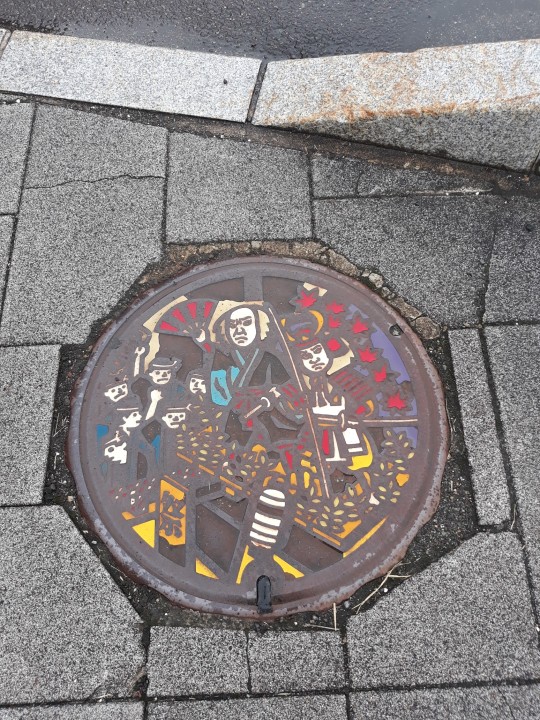
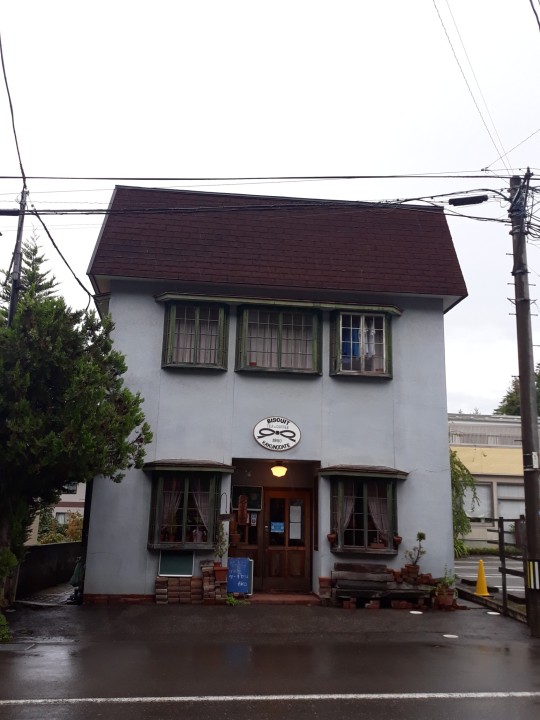

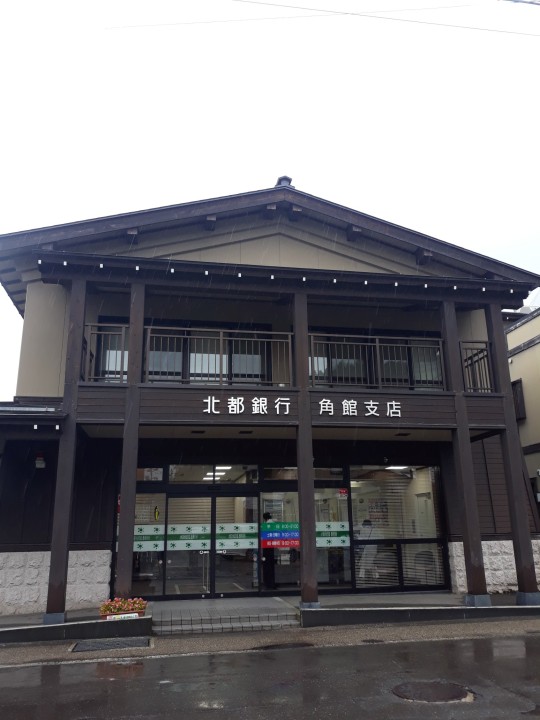
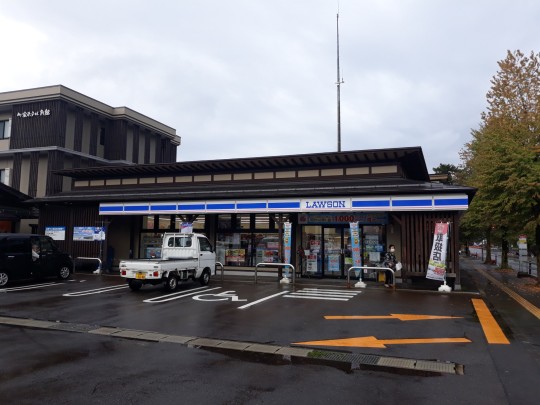
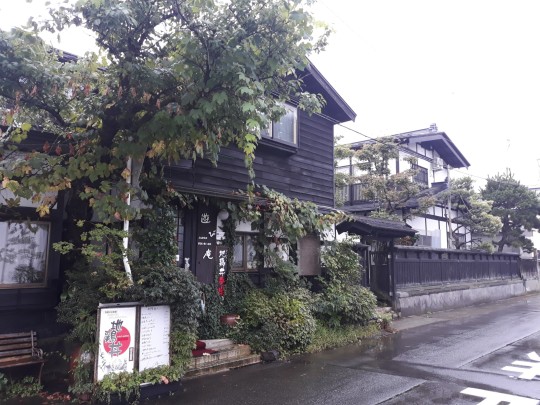
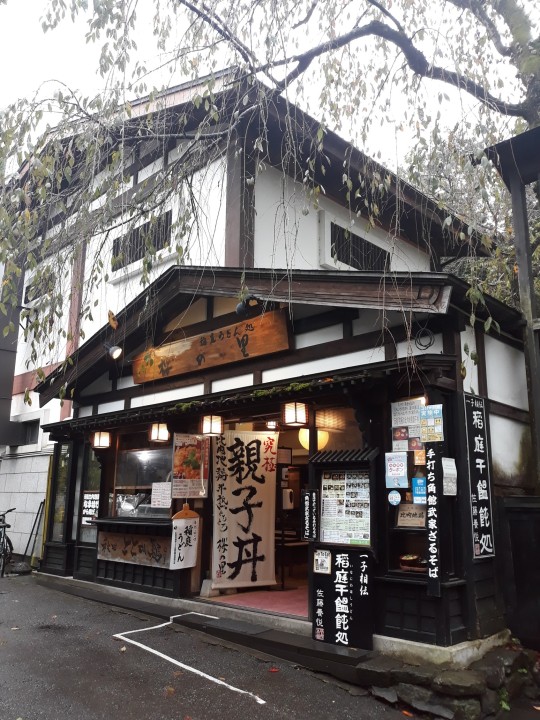



Kakunodate: A town in Akita prefecture that is described as "little Kyoto" and the "samurai village". It has many traditional Japanese style buildings and residences.
1 note
·
View note
Link
0 notes
Link
0 notes
Link
0 notes